Sleek, short, brown hair, distinctive long legs, and a face so loveable none can resist. That’s what a Boxer Dog is.
These long-limbed, strong-bodied dogs are powerhouses of energy and oodles of fun. But where do they come from? What kind of dogs are they really?
Are they good with kids, good with other dogs, and do they adjust well to a new home?
Keep reading to find the answers to these questions and more.
Keep in mind, these are generalizations of these breeds based on the information we have found from several sources.
A lot of how a dog acts comes down to how they are treated and trained.
Table of Contents
The Boxer Dog Breed Origin, Traits, and Other Fun Facts
Why Are They Called Boxers?
The typical notion of the origins of the name “Boxer” is that it derives from the breed’s tendency to play standing on their hind-legs and “boxing.”
Origins of the Boxer Dog Breed
If you have had the pleasure of owning or keeping a boxer, then you know that the boxer dog is a kingly breed hailing from German and English descent.
Originally developed in Germany in the late nineteenth century, Boxers are a crossbreed of the Old English Bulldog and a breed known as the Bullenbeisser or “bull biter”, which is now extinct.
(Note- the Bullenbeisser is extinct due to crossbreeding rather than some genetic deficiency in the breed.)
The Bullenbeisser was put to work as a hunting dog for many years. Prized for its strong jaws, it was used to hunt bear, wild boar, and deer specifically, it’s job to grab the prey and lock-on.
The Boxer was born out of the desire for a faster dog with the same bite power and is considered to be part of the Molosser group.
The Molosser group descends from a common ancestor called the Molossus, a breed found in the ancient kingdom of Molossis and commonly used for shepherding.
The first official Boxer club, the Deutscher Boxer Club, was founded in 1895, and Boxers were first exhibited in Munich for St. Bernards in 1896.
The club published the first breed standards in 1904, solidifying what makes a Boxer different from other similar breeds.
According to the American Kennel Club, the Boxer Dog is among the top fifteen most popular dog breeds in the United States.
During World War I, the Boxer Dog was put to great use for military work. They were found to be incredibly valuable as pack carriers, messenger dogs, attack dogs, and guards.
Over the years, Boxers have been in many other jobs, including athletes, police dogs, cattle dogs, watchdogs, and guide dogs for the blind.
This evidence supports the notion that Boxers are trainable and intelligent with an eagerness to please their human companions, but more on that later.
Physical Traits Of A Boxer Dog
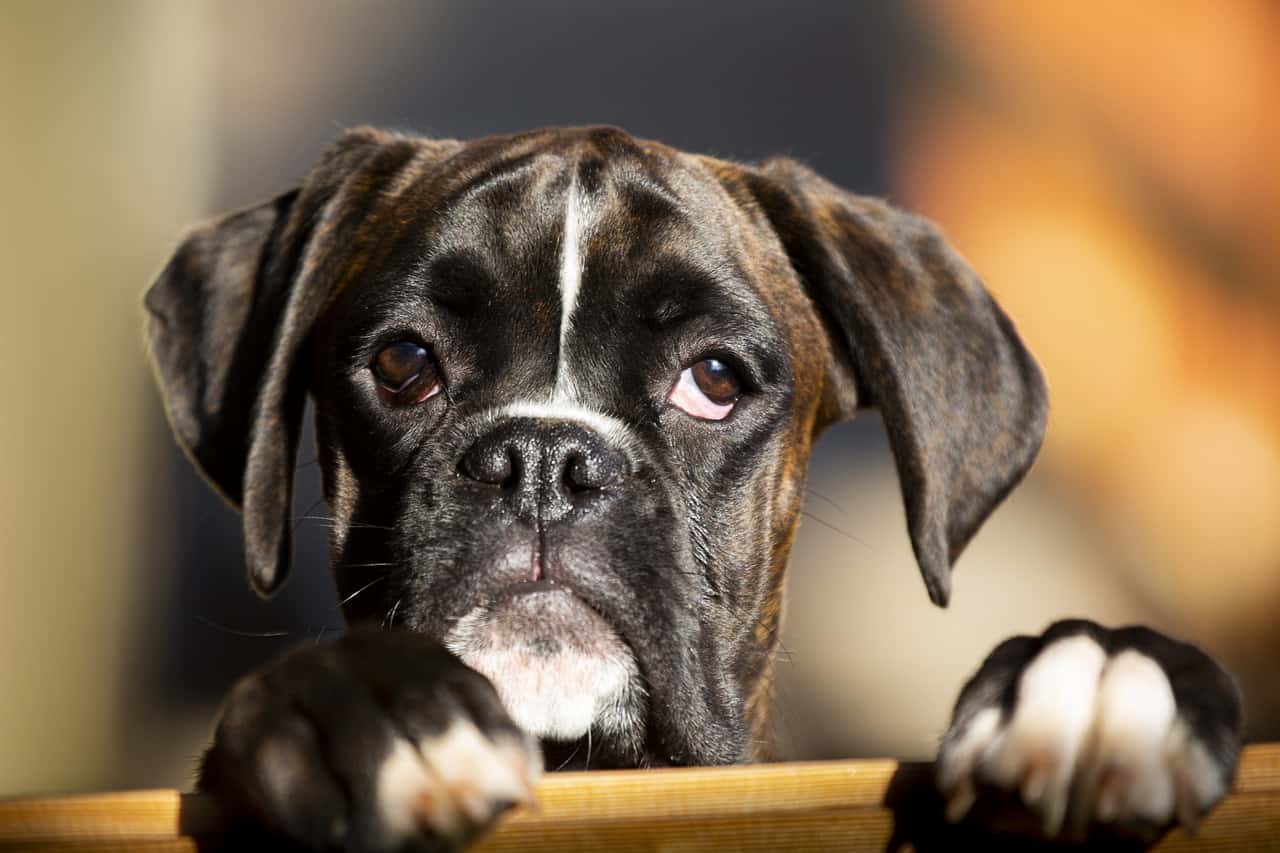
Size-wise, the Boxer is considered to have a medium to large build. Boxers are generally square-built dogs of hearty stock with short backs and short coats.
Their strong legs are typically quite long with males standing on average 24-25 inches in height and females 21-25 inches.
Boxers have stout, well-muscled torsos that pack on weight, putting them on the heavier side for most household pets.
Males, on average, weigh anywhere from 65 to 80 pounds while females average 50 to 65 pounds in weight.
Their large, agile bodies have made them ideal hunting and working dogs. Well-muscled physiques often make their skin appear taut and smooth.
Their proud carriage and confident gait set them apart from other breeds.
It is not their large bodies that set them apart, however, it is their distinctively shaped heads.
The Boxer’s wide head and broad muzzle are the most unique features of the breed and, as such, there are a few critical standards that must present in the animal for it to be technically considered a Boxer by breed standards.
One such characteristic is that the head must be in exact proportion to the body. The head size is that it must not be too small.
Above all else, the muzzle must be of the correct form and at an exact proportion to the skull. A ratio of 1:3 in the length of the muzzle to the entire head must be present.
Another characteristic of the head and face is that there are always folds present from the base of the nose running down on both sides of the snout, and the nose should be slightly higher than the base of the snout — where it connects to the skull.
Additionally, the Boxer is not a true Boxer if there is no evidence of prognathous, in other words, a Boxer’s lower jaw should visibly protrude in what is commonly known as an underbite.
Until recently, it was customary to see a Boxer that had been “docked and cropped.” Docking refers to the clipping of the tail, while cropping refers to the practice of clipping a dog’s ears to stand up straight.
These traits are typical of working breeds and have been considered a precaution to keep tails from snagging on things.
Cropping of the ears had been excused for much the same reason, however, it seems more likely that these were simply aesthetic preferences.
These practices have fallen out of favor and, due to the work of several animal rights organizations, these practices were prohibited in many countries because it was considered cruel and inhumane treatment.
In the UK as recently as 1998, they perfected a breed of Boxer with naturally “stumpy-tails,” as of 2008, this practice was also banned.
While the cosmetic preference for cropped ears and docked tails are still fairly common across the US and Canada, it is no longer permitted in the official exhibition.
Boxer Dog Coat and Coloring
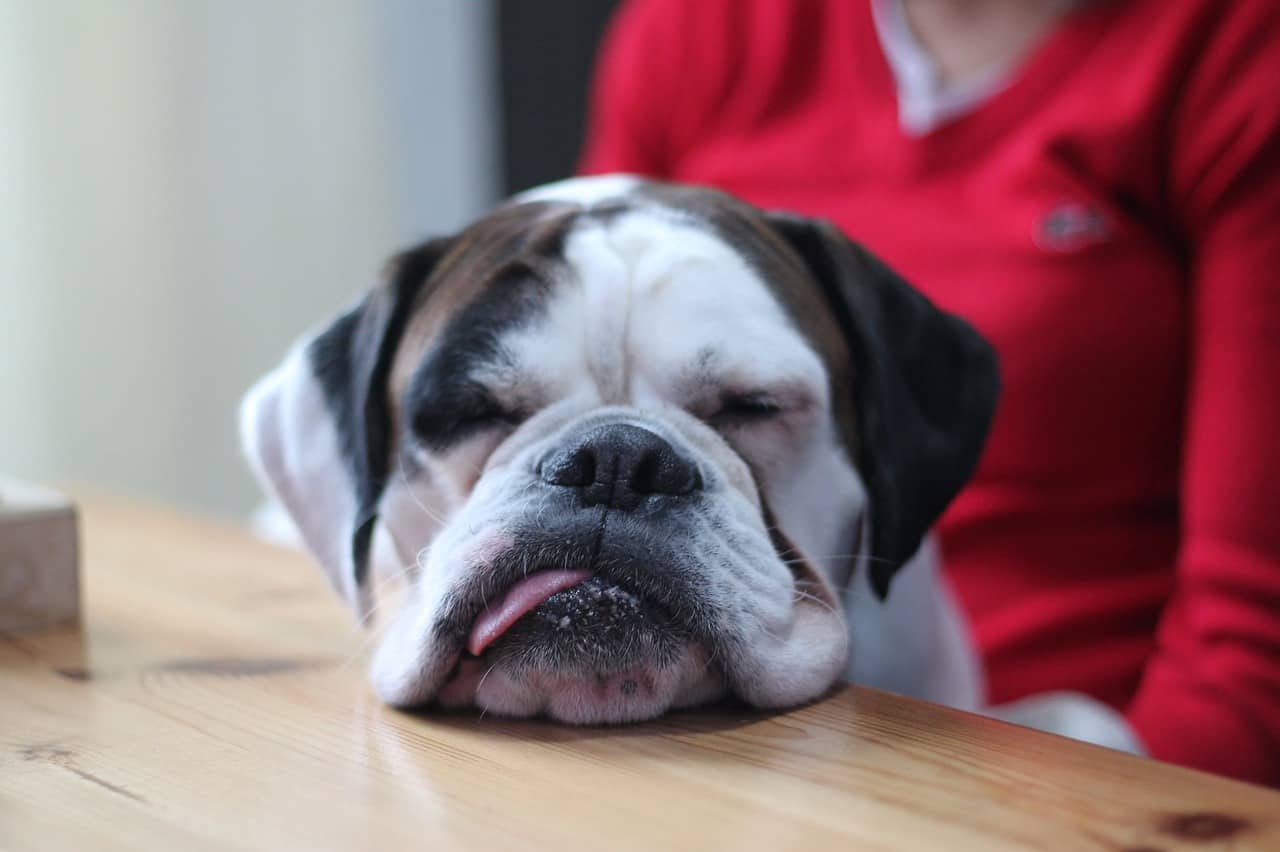
Boxers are a short-haired breed. Their coat lies tight along their bodies, and the most commonly recognized colors are fawn and brindle.
A Boxer’s underbelly will typically be white, and many of them seem to be wearing cute socks with white on their feet and ankles.
The white markings are also called “flash” and often extend up the dog’s neck and onto their face.
These typical colorings are not as simple as “fawn” and “brindle,” these terms refer to a range of tones.
The color-set known as fawn denotes a range of hues which described as tan or yellow, reddish tan, dark honey-blonde, and mahogany or stag/deer red.
Brindle refers to a striped-pattern in the dog’s coat. This brindling appears as black stripes over the same array of fawn coloring.
Less common is what is known as “reverse brindling,” this occurs when the Boxer is so heavily-striped that it looks like the dog is black with tan or reddish stripes.
These colorings are not only typical of Boxers but are considered part of the breed standard. In fact, this is so specific that breed standards state that the fawn coloring must be visible beneath the stripes and must contrast clearing.
There exists a third coloring for Boxers. These dogs exhibit white markings or flash that stretches to cover more than one-third of their coat, and are commonly called, “White Boxers.” I’m sure you’ve seen one.
There’s one in my neighborhood. No, they’re not albino and they really aren’t all that rare. In fact, about twenty-five percent of all Boxer Dogs are white.
Interestingly, the genetic profile of these White Boxers is always fawn or brindle, it’s simply that the usual white markings found on other Boxers have spread further on their coats.
These dogs are more susceptible to sunburn and associated with a higher risk for skin cancers than other darker-colored Boxers.
Also, a fun-fact about White Boxers, the gene responsible for their white appearance is linked to congenital deafness in dogs. More on this to come.
What do we get from all of these intentionally bred physical characteristics?
What To Expect From a Boxer Dog
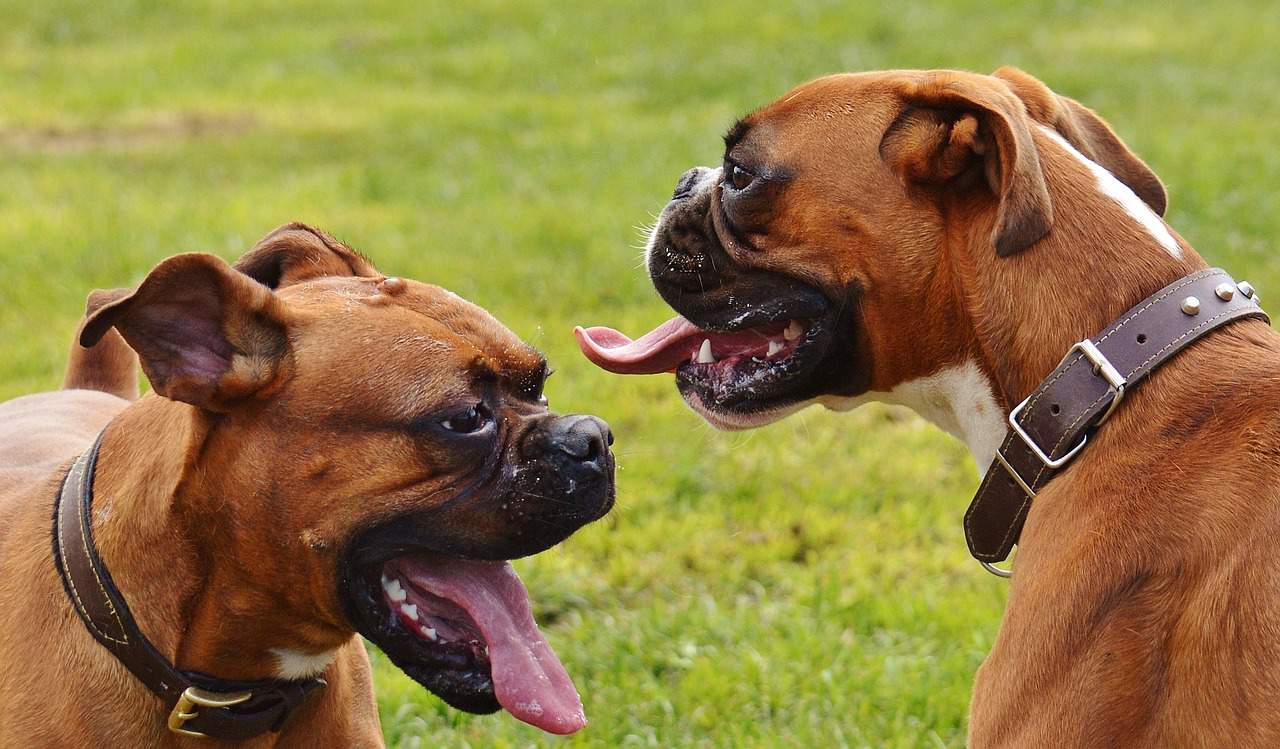
From all that you have learned so far, you can imagine that the Boxer has an extremely well-bred temperament.
While this sounds like a strange, perhaps outdated turn-of-phrase, in this case, the breeding tells us a lot about the dogs.
As we’ve learned, the modern Boxer was intentionally bred from two dominant European breeds that had been used for working in tasks where they worked closely with humans.
Evidence of the Molosser group of canines working closely with human masters or companions dates back as far as 2500 B.C.
Because of this long-established, we know that these dogs have been nurtured and socialized by humans for centuries specifically for the traits that make them well-suited for their tasks.
The 1938 American Kennel Club Boxer breed standard describes Boxers’ character as one of great importance that demands attention.
Renowned for their great love and faithfulness to their master and household. They are harmless in the family, but distrustful of strangers, bright and friendly at play, but brave when aroused.
They describe the breed as intelligent, willing, and tractable, with modesty and cleanliness. It goes on to say that Boxers are loyal and honest until the bitter end.
The big takeaways here are that with a Boxer, you may expect a great family dog and a fiercely loyal companion.
These dogs are great around kids.
Bred for their natural instincts as shepherds and hunters, they will look after the kids when they’re little and play with them all day when they’re older.
They love to spend time with their owners and are big-time cuddlers.
Boxers are typically not big-time barkers, while they are high-energy, they are normally even-keeled animals.
They are preferred because of this mild demeanor. When they do bark, there is generally a good reason for it. This trait has made them excellent guard dogs and watchdogs for years and years.
Many Boxers are quite vocal though, their preferred method of communication being growling and other various throat sounds.
The downside to having one of these big lovable pups can be their energy level. This large breed of dogs was bred with all those characteristics that make them good pets, but many of those are the ones that made them good workers.
Because of this, you might expect that the Boxer has a lot of energy that needs to be worked out.
An average Boxer requires about forty-five minutes to an hour of daily exercise.
The horror stories you may have heard about Boxers destroying furniture may very well be true, but they are often the result of an imbalance in the pairing of owner and dog.
If you are an avid runner, hiker, long-distance walker, cyclist, frisbee thrower, or any number of a plethora of outdoor activity enthusiasts, then owning a Boxer is a great idea for you.
If you have a big backyard and some kids that also need to burn off some energy, then owning a Boxer is a wonderful idea.
But, and this is in all seriousness if one is not prepared to set an active daily routine, then a Boxer is not the right fit for a furry companion.
Something else to look out for with Boxers is a high tendency to drool.
Are Boxers Easy To Train?
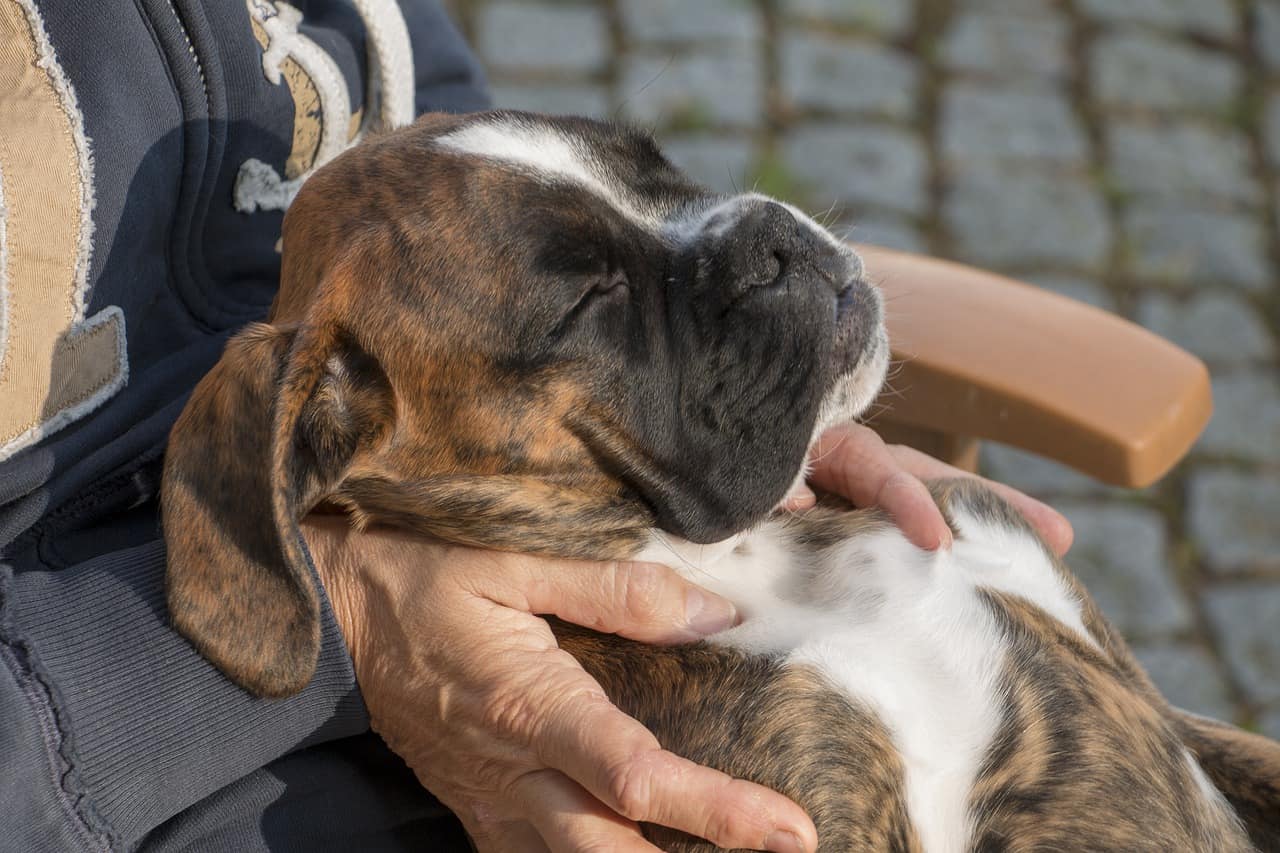
As with any other breed of dog, for the Boxer Dog to be most receptive to training, they should be socialized at a very young age.
Puppy training classes or an at-home regimented schedule of activity and training are vital to channeling the breed’s energy in a positive direction.
Boxers are very intelligent, but with that intelligence comes curiosity and a low attention span that is easily bored by repetition. They typically have strong individual personalities.
Along with daily exercise, Boxers need structure. They are excellent problem solvers which made them ideal work dogs and continues to make them champion show dogs.
Boxers are natural athletes and excel at various sports including agility, obedience, and herding. Building an obstacle course for your Boxer could be a fantastic way to channel that potential.
Socialization with humans is critical but training with other dogs is also key. Boxers are not always fond of other dogs of the same sex but tend to work well with dogs of the opposite sex.
One last note on training, just because it is best to start training your Boxer Dog young, do not assume that an old dog cannot learn new tricks.
Adopting or rescuing an older Boxer can not only save that dog’s life, but it can also be an incredibly rewarding experience.
Even an adult Boxer that may not have received proper socialization and training early on can be worked with, nurtured, and trained into that same loyal, obedient, lifelong friend that you would get from a puppy.
Boxer Dog Nutritional Requirements
All dog owners want to give their dogs the best quality food possible. Boxers are premium dogs and as such deserve the best.
Food should be high calorie with the main source being an animal protein, preferably chicken, turkey, lamb, or fish.
With that said, they will make do with almost any blend of quality dog food, commercially manufactured or farm-to-table.
Treats are important in training, but giving too many can lead to obesity.
Boxers are prone to becoming overweight when overfed, so it is recommended that you monitor your dog’s food intake closely.
Boxers love to eat raw vegetables and some fruits. However, before offering your pet food from your own plate, it is good to consult your vet or, at least, the internet to see which foods are safe.
As always, fresh clean water should always be available and should be changed out with some regularity.
Boxer Dog Grooming
With all the Boxer’s high-maintenance energy and training schedule, one major positive is that they do not typically require a whole lot of grooming.
Generally, a once-over with a hound glove or rubber curry-brush once or twice a week should keep them looking their best. The Boxer also does not need to bathe as regularly.
A monthly nail-trimming schedule can be necessary unless the nails are worn down from regular activity on hard surfaces.
Teeth should also be brushed regularly to prevent tartar build-up and odor production.
As their coats are quite short, Boxers are infrequent shedders which can be a godsend during a busy week.
What Are Some Boxer Dog Health Problems?
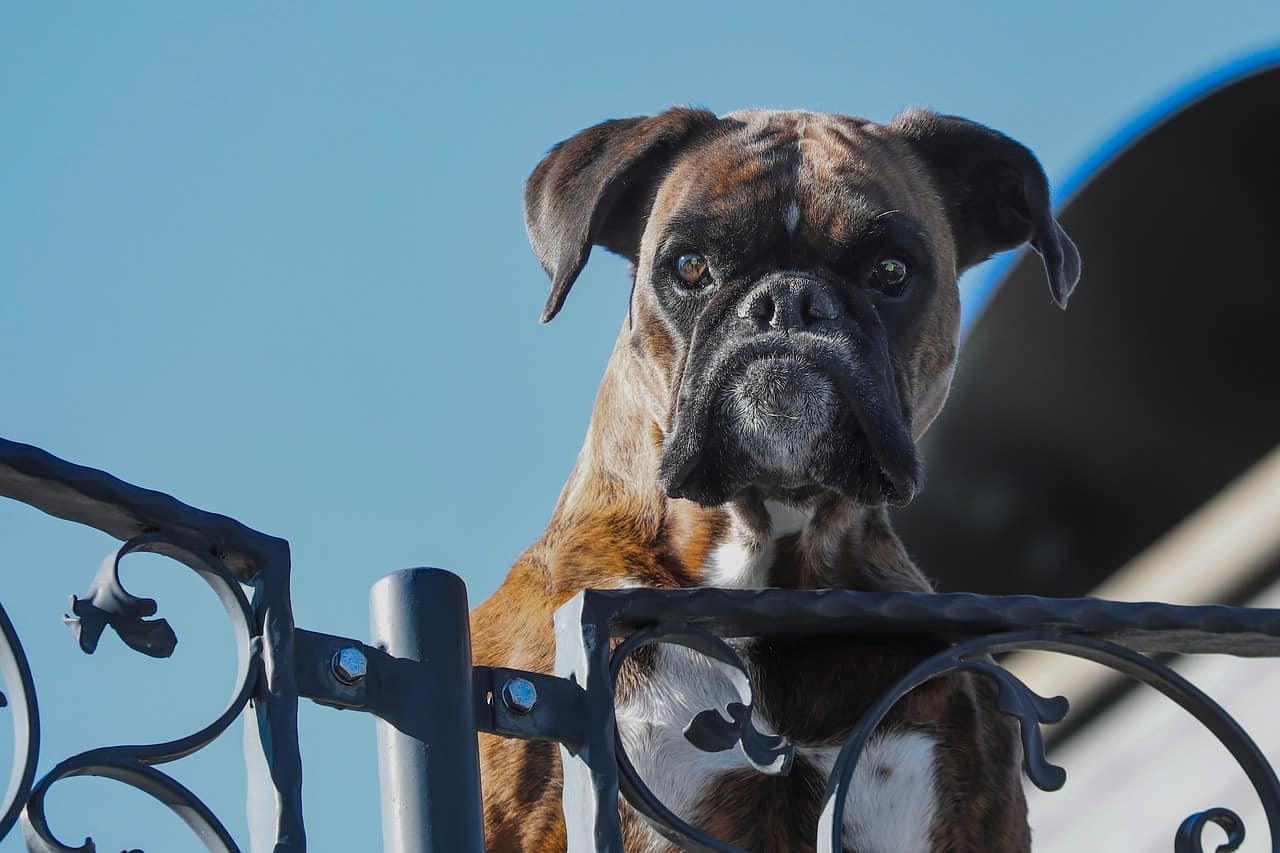
Also, because of their short coats, the Boxer does not have a high tolerance for the cold, but neither do they enjoy extreme heat.
Boxers love to be indoors with the family. A good rule of thumb may be to consider whether the temperature is comfortable for you and, if not, the Boxer is also most likely uncomfortable.
Responsible breeders always screen their stock for congenital conditions such as hip dysplasia, heart conditions such as aortic stenosis and cardiomyopathy, thyroid deficiency, degenerative myelopathy, and certain cancers.
However, when going to a breeder to purchase a dog it is good to be aware of these conditions and acquire a certification of testing
Summarizing The Boxer Dog Breed
The Boxer Dog breed has been strategically cultivated for over a hundred and was bred as a hybrid of two time-tested and loyal working dog breeds.
The first Boxers came from Germany where they developed the first breed standards. The breed spread throughout Europe and made in to the United States by the early 1900s.
Boxer Dogs were bred to have specific traits that make them more well-suited to performing manner of tasks from hunting to herding, from guard dog to messenger dog.
They are intelligent and eager to please making them easy to train.
Their high energy levels make them bright and fun. They love to play with the whole family, and when socialized even play and work with other dogs.
Boxers are bred shepherds and will make excellent nannies and lifelong friends for your children.
Boxers are the perfect running and active lifestyle companions, but without positive reinforcement and a structured outlet for that energy, they can turn to negative behavior. That energy must be rigidly managed.
Boxers are very easy to groom and require little maintenance. They are natural athletes and need lots of exercise or they may be prone to obesity.
It is important to monitor their food intake and the number of treats you give them each day.
It is also important to make sure that while they are getting their exercise, they are also getting the correct amount of calories from lean animal protein sources.
Like any other breed, Boxers are prone to certain health risks. It is important to be aware of these risks and ensure that you get certification from breeders of testing in their stock.
It is also important that if you bring a Boxer home from the pound that you have these days conducted early and as often as your physician recommends.
